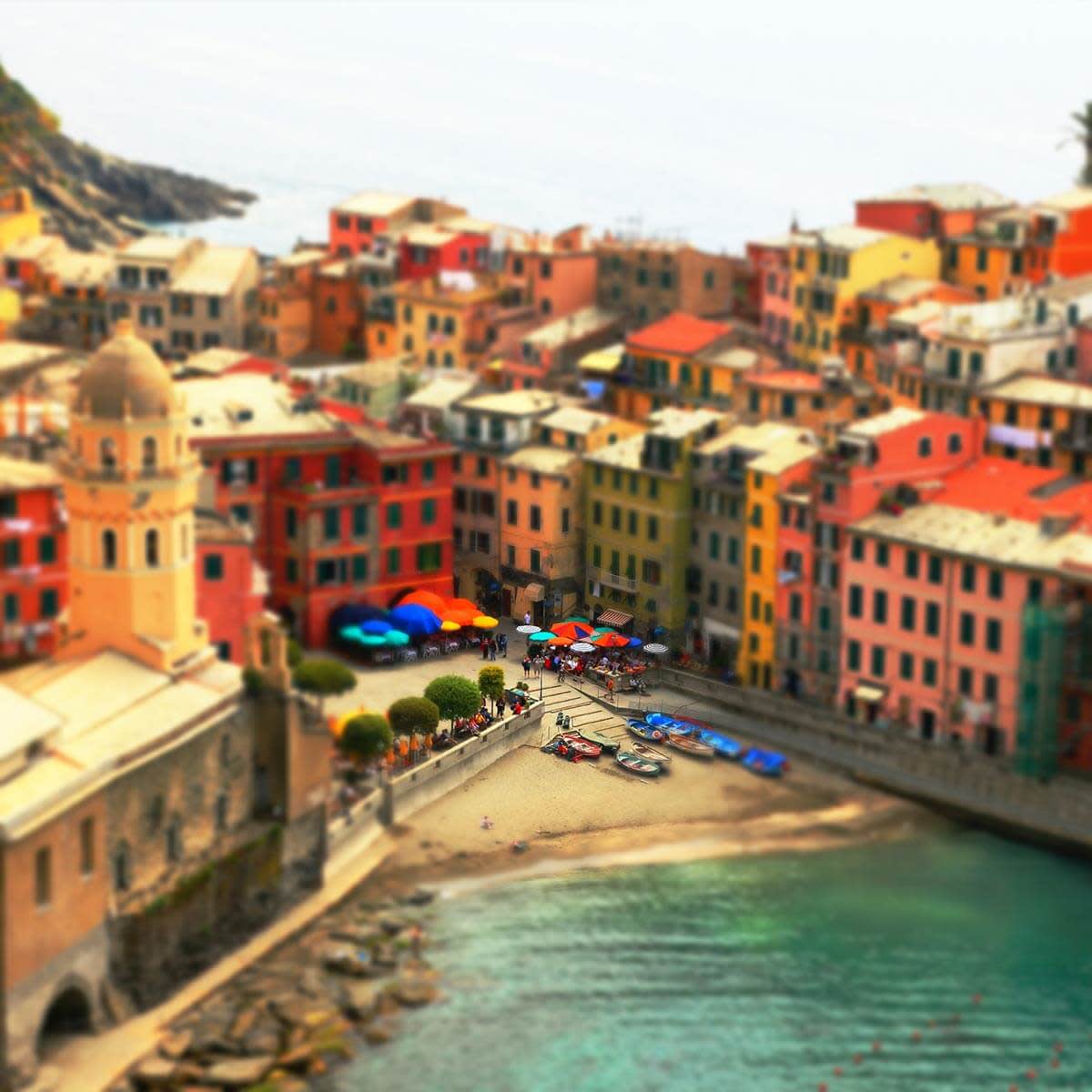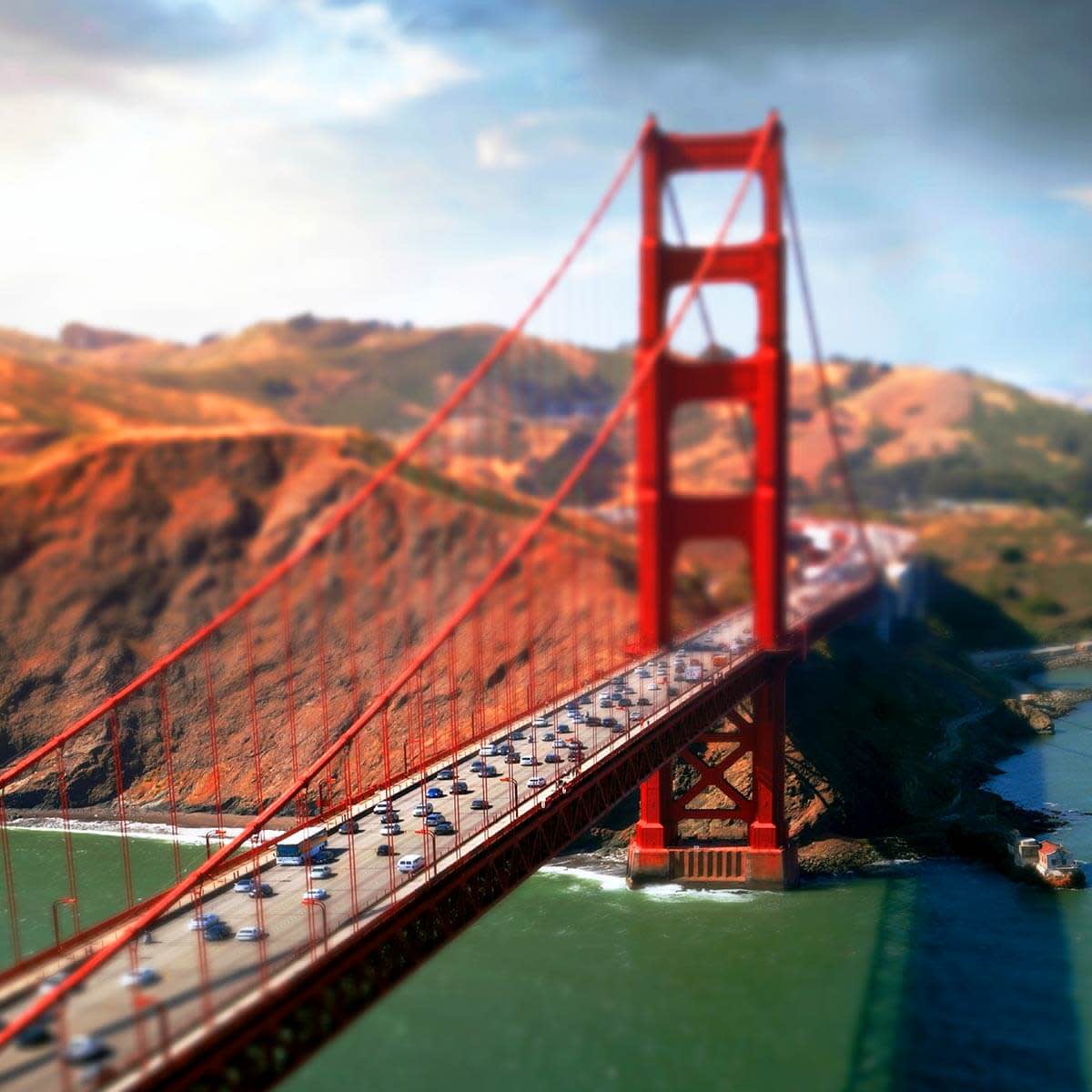Miniature makes everything look like a little toy, or model. If you watch The Late Show with Stephen Colbert, you’ve seen it done gorgeously, in the show open.
What is the Miniature effect?
The effect isn’t literally shrinking anything, of course; it’s an optical illusion. If you look at something really close to your face (like your hand or something), the background will be out of focus. Lenses and eyeballs work the same way like this. The closer you are to something, the shallower the depth of field. But if you’re viewing distant scenes, everything is in focus, right? It’s like setting your camera to focus at infinity.

What the Miniature effect does is introduce some selective blur to the foreground and background of an image. When we see something far, but with a shallow depth of field, our ape brains get confused and think, “Thing look close, thing must be small!” It works even better if your shot is from a high vantage point.
Tips for using the Miniature effect
To make the most of the effect, here are some general shooting tips. It works really well if you’re shooting down onto your subject. A 45º angle is a decent place to start; try a few though. And try framing your image with a generous amount of foreground, which helps lend a sense of distance.

Since the effect makes things look like toys and models, your photos will be more evocative if your subject is a building, cars, trains, or anything that people are used to seeing in models or dioramas. Flowers, for instance, might not work as well as a town square. Photos of people should be more like crowds, or group shots where the entire body is in the picture. Portraits and close ups just flat out won’t work. You want to shoot large things, wide angle, and then use the effect to make them look small. There lies the magic!
Miniature time-lapses have “gone viral”—as the people who say “as the kids say” say—for the simple reason that they look really cool. “Tilt-shift” became the shorthand for faking miniature scenes, but technically that’s a misleading conflation. There’s an extensive Wikipedia wormhole on the evolution of tilt-shift photography and the technical differences between tilt-shift and other miniature-simulating effects; dive in if you’ve a taste for it.

Now that you know how it works, get Miniature goin’ on your own photos! The sliders adjust the intensity of your selective blurring, and the depth of field. The linear and circular options each set a focal plane in one of those shapes.
Learn more photo editing tips: Blur Backgrounds, Mirror Image Effect, Film Grain Look, Make Photo Art, Blur Whole Images, Cartoon Look, Vintage Effects
